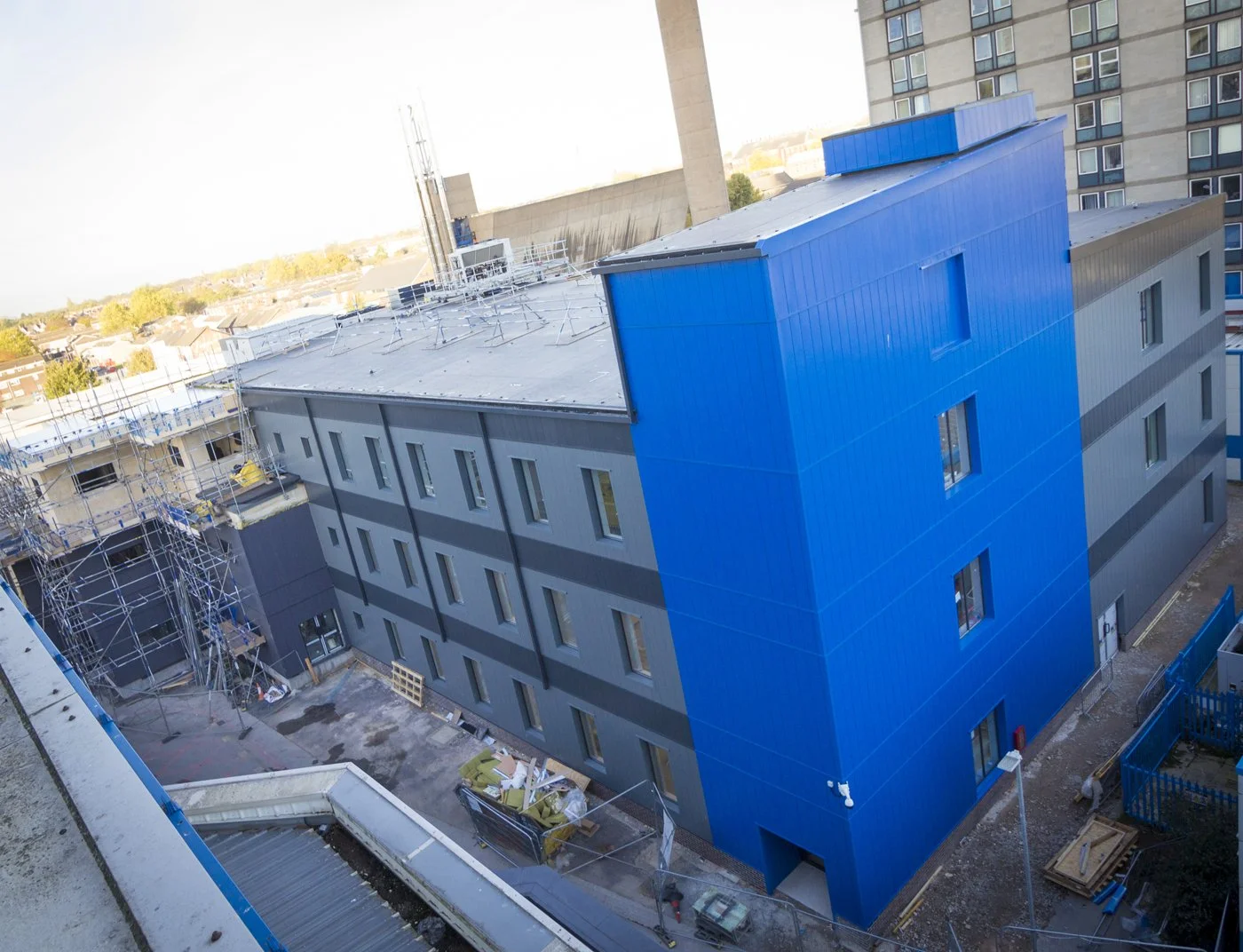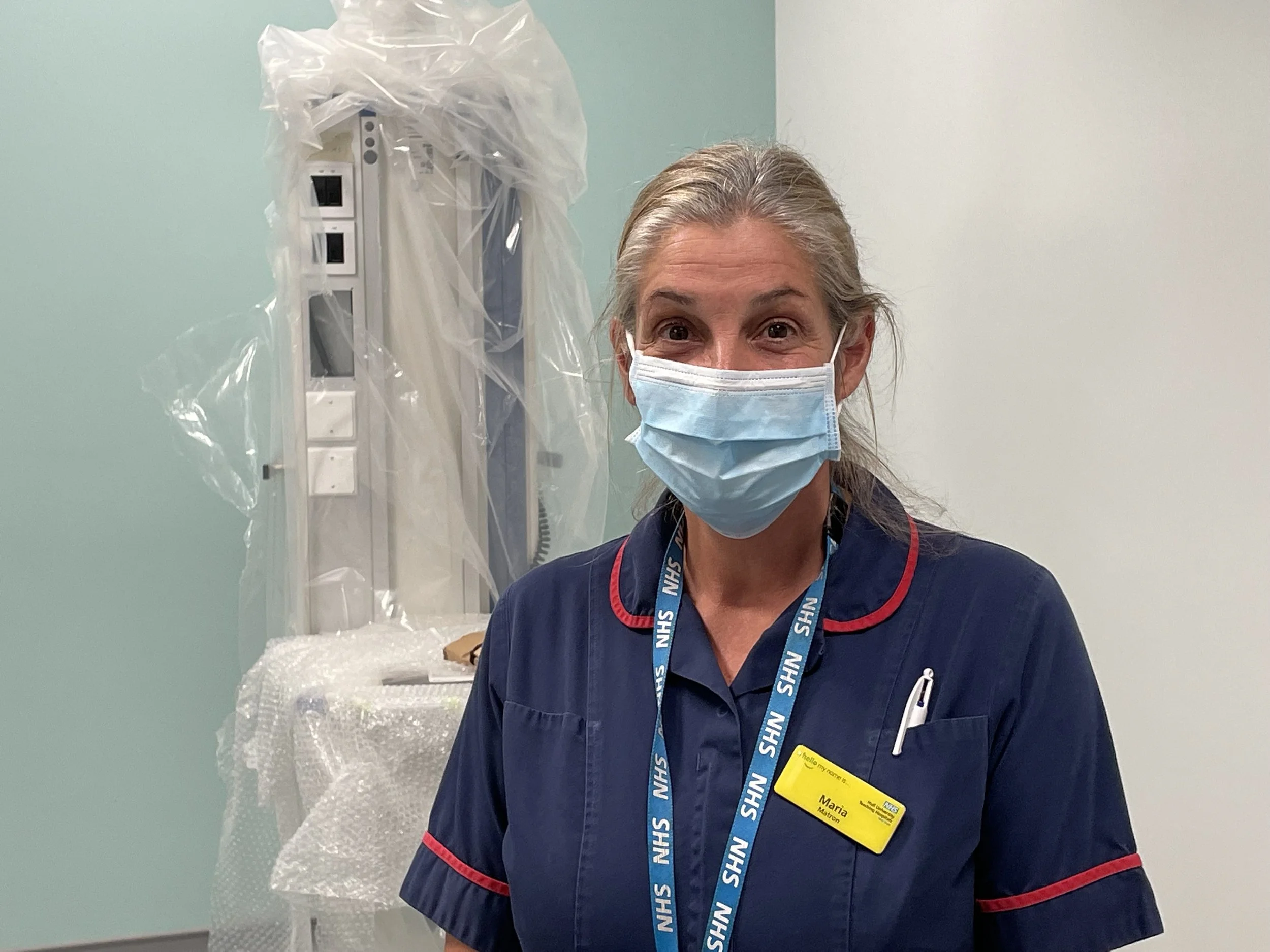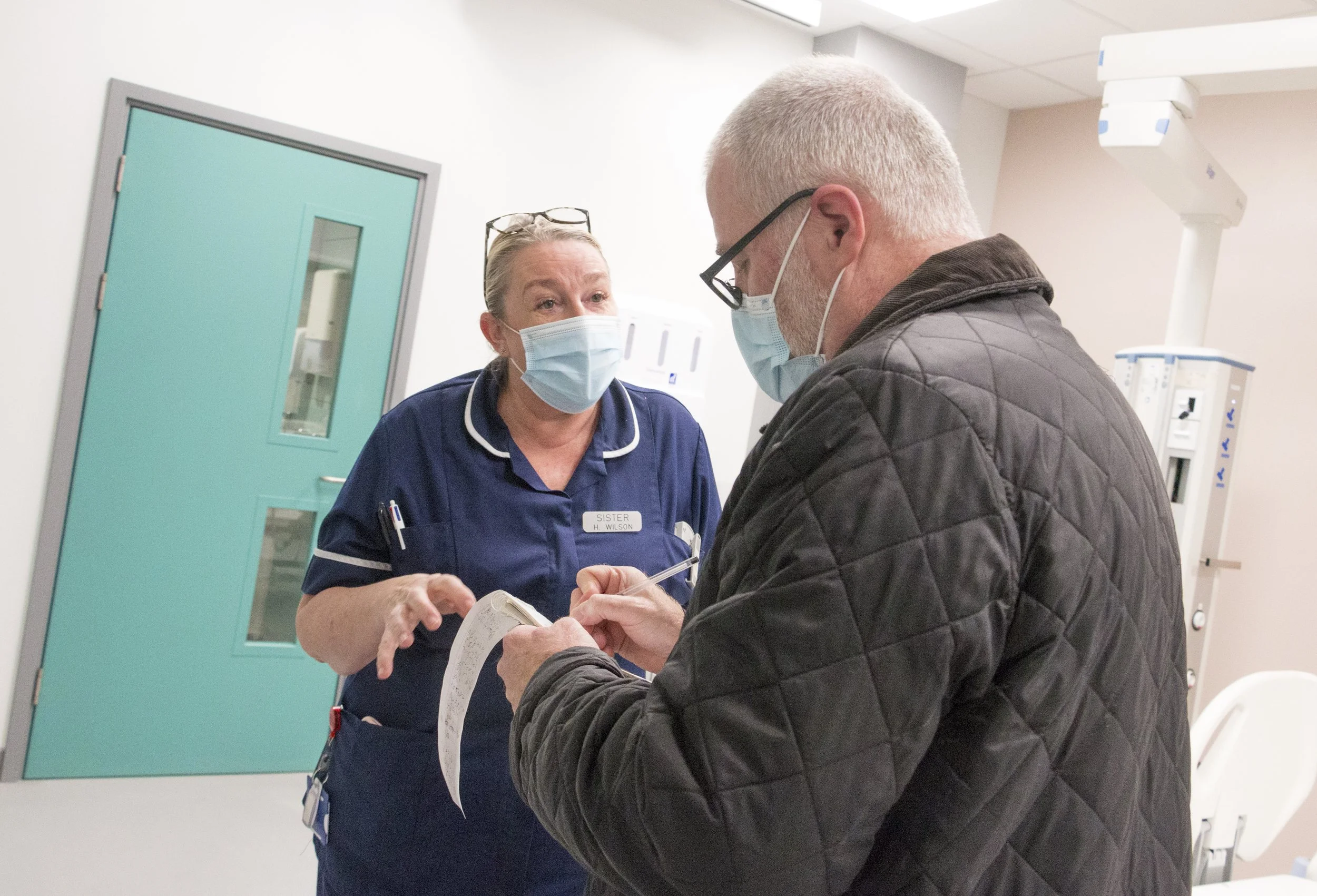‘This will help us save more lives’: New £8m ICU opens at Hull Royal Infirmary
BESPOKE: Inside the new ICU at Hull Royal Infirmary
By Simon Bristow
Critically ill patients from across the region will now be treated in some of the best facilities in the country, thanks to the launch of a new £8m Intensive Care Unit (ICU) at Hull Royal Infirmary.
The new 24-bed facility, which is still in the final stages of construction, was unveiled this morning following an intensive programme of work that only began in January this year. It is due to open in the first week of December.
The three-storey unit, which is next to the Emergency Department, features modern isolation facilities, which allows patients with infections to be safely treated under the same roof as others needing intensive care; a major advantage when tackling crises like the Covid-19 pandemic.
Trust chief executive Chris Long said: “This fantastic unit will support our outstanding critical care teams by providing some of the best facilities in the country.
“As a major trauma centre for the entire region, our new unit will help us save more lives and provide our sickest and most critically injured patients, as well as their relatives and our staff, with cutting-edge equipment in a modern environment.
“It puts our area in the best possible position to deal with any future waves of the virus or, indeed, any other pandemic in the future.”
FINISHING TOUCHES: The new three-storey ICU building near the Emergency Department
Patients will receive specialist one-to-one care in glass-fronted cubicles, double the size of the cubicles in the two existing ICUs in the infirmary tower block.
There are 12 cubicles on each floor, split into identical halves separated by a central observation area for staff.
Every cubicle has a Draegar ceiling pendant for essential services, including medical gases to maximize the floor space. This means doctors, nurses and other health professionals such as physiotherapists will be able to perform their tasks more easily around the patient’s bed.
Electric hoists have also been fitted so staff can lift patients safely, reducing the risk of musculoskeletal problems in the future.
Cubicles will be fitted with negative air extraction systems to assist infection prevention and control. Six of the 12 on each floor have “donning and doffing” - the putting on and taking off of PPE - anterooms so staff can care for patients with Covid-19 or any other infectious disease.
The new ICU is being constructed in line with the trust’s Zero Thirty campaign, by which it aims to be carbon neutral by 2030, ten years earlier than national NHS targets.
‘IT’S A DREAM COME TRUE’: Critical care Matron Maria Lewis
As such, it will be as energy efficient as possible with its own heat pumps, air conditioning, chillers and heat recovery systems. This means the unit will remain cool enough for patients and staff in the summer but warm enough in the cooler months.
Duncan Taylor, the trust’s director of estates, facilities and development, said of the unit: “There’s an awful lot of resilience built in to make sure it’s future-proof.
“I think it’s up there with the best. We build things that are value for money, and my view is we should also have the best. Why shouldn’t Hull have the best facilities?”
He added: “Our team has worked hand-in-hand with our clinical colleagues who deliver the care to design the unit with their needs and the needs of the people they care for at the forefront of every decision and plan.
“The result is an Intensive Care Unit which symbolizes the futures of critical care and we’re very proud that Hull and our trust is at the forefront of this innovation.”
The launch was a particularly proud moment for Critical Care Matron Maria Lewis, who has been advocating for a new ICU for ten years.
‘THE BEST POSSIBLE CARE’: Patients and staff will benefit from the new facilities
Mrs Lewis is due to retire on December 17 after a 37-year career in the NHS.
She said: “The dream was to have something bespoke built and that dream has now been realised. It’s been a lifelong dream to get in here and it’s a nice full-stop for me and a good place for my successor to take over from as well.
“It feels like a real sense of achievement. It’s unrecognisable from the premises I first started working in.”
Delivering the unit according to the plans, and making sure it is the best it can be for patients and staff, has been the focus of Amy Lockyer, commissioning and support services manager at the trust.
Her attention to detail is such that the colours for the staff areas and patient areas are different, with a “nice yellow” for staff to help their wellbeing, and a “recovery” green for patients.
“I’m fully immersed in this; it’s what I think about when I go to sleep and when I wake up,” she said. “I just want to make sure it’s 100 per cent what the girls and the guys on the team want.
“I want it to be somewhere I’d want one of my loved ones to be looked after in.”
‘IT’S BETTER FOR PATIENT SAFETY’: Sister Helen Wilson being interviewed by The Hull Story
Sister Helen Wilson said: “It’s an absolute bonus for our general population, because we’ll finally be able to look after the most vulnerable patients, critically ill patients, safely in one place.
“We have the opportunity now to stay in one place as a team; nurses and medical staff, and look after patients in one area.
“Managing intensive care patients is never going to be easy and the staff working here are under phenomenal pressure, but this makes it safer and easier. It’s got to be better for patient care and patient safety.”
Mr Taylor said an example of one way in which the new ICU was “future-proof” was through its oxygen supply, which has been a challenge to many hospitals during the pandemic.
The new unit has 54 oxygen mains coming into the building, capable of delivering 10,000 litres per minute.
A dedicated bed lift connects the ICU to the theatre complex in the main infirmary tower block via a link bridge over Lansdowne Road. This will also be used to take patients from the ICU for MRIs or scans, preventing the need for them to be wheeled outside to the MRI suite.
A staff-only link staircase will also be created to ensure teams can access the tower block without having to leave the building.
As part of the ongoing project, two new trauma theatres will be created on the top floor, with six to eight recovery beds to monitor patients in those critical first few hours after surgery, the trust said.
The new theatre floor will also act as a decant space so the existing ICUs can undergo routine maintenance.
An extension is being built next to the ICU to provide support accommodation for staff, including rest rooms, offices and support services, including Medical Physics.





